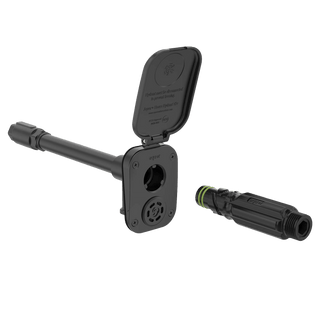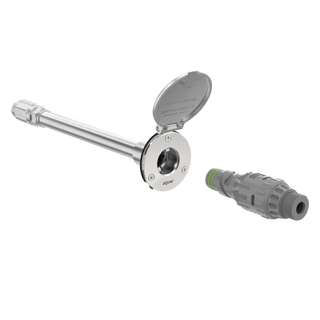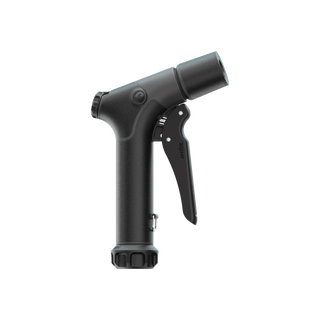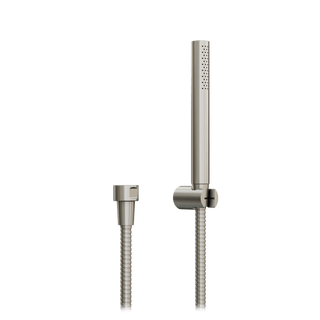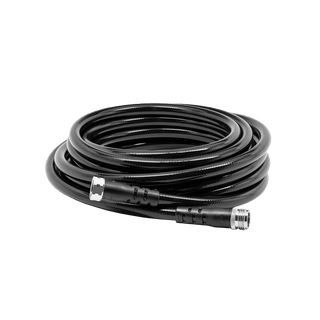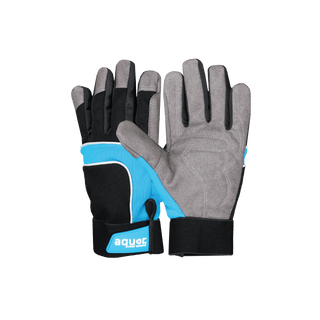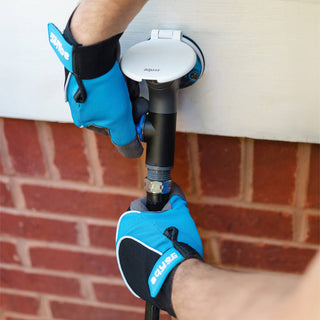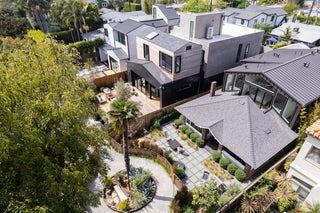How Do I Start a Garden? Beginner's Guide to Gardening Essentials
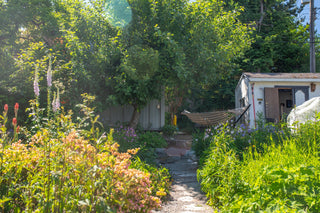
Residential gardening has continued to increase in popularity during the last few years with over half of American households getting their hands in the soil. Gardening is a rewarding hobby, keeping participants active while improving mental health and encouraging self-sufficiency.
This article serves as a beginner’s guide for gardening basics. Let's get growing!

What to consider before getting started
Where to start? Before you run to the nursery (or nearest plant-selling establishment) in sheer excitement and grab all the cutest plants available, set aside some time to plan out your garden, taking into consideration the season, what plants you’re interested in growing, your space, necessary soils and fertilizers, plus tools.
Plan for the seasons
Springtime is when new growth usually begins. If you’re planting in the ground rather than in a raised bed or containers, you may have to wait until the ground warms up a bit so the soil isn’t too hard to dig through. Many gardeners will use the spring season to set up all the plants they want to see flower in the summer and early fall. Are you a healthy snacker? Plant veggies such as bell peppers, sweet peas, and broccoli during the spring. Your crudité platters, salads, and stir fries will be extra fresh and flavorful!
In most regions, summer is considered the peak season for gardening. Cold weather is in the past, and thanks to the warm soil plus sunshine, plants can thrive. The beginning of summer is a great time to prepare for anything you want to plant in the fall as well. Want to carve pumpkins for Halloween? Plant your gourds early summer—or even late spring—to enjoy plump pumpkins by the time October arrives. Live in the desert? Cacti it is.
Once fall rolls around, many gardeners see this as an opportunity to plant shrubs and hearty flora that can stand up to winter weather. It’s also a great time to plan for what you want to grow when the next spring comes around based on successes and new knowledge. (Yes, a lot of planning is involved with gardening!) Plant spring-blooming bulbs like daffodils and tulips at this time, so you'll have colorful flowers to enjoy once winter passes. Just be careful of hungry critters!
The cold season is generally seen as the best time for maintenance and upkeep. The soil usually becomes much harder to work with and is often saturated with water. Take this time to plan for the next year. It’s also important to protect existing dormant plants by removing excess snow and making sure they are getting the right amount of nutrients. If you're fortunate to live in a warm climate year-round, plant away!
Decide what you want to grow
Before you can begin gardening, figure out what plants you want to grow. There are a wide variety of plants that grow best during specific seasons, so it’s important to make sure you know when you should be planting different seeds and younglings.

If you’re having trouble deciding, take a look at 10 Easy-to-Grow Fruits & Vegetables for Gardening Beginners and 10 Easy-to-Grow Outdoor Plants for Gardening Beginners for inspiration.
Decide where you want to grow your plants
Choosing where you want to actually plant and how you want to set up your garden is an important part of the process. The most common options are the ground itself, raised beds, and planters or pots.
Planting directly into the ground is typically simple initially, although this method often requires a good amount of maintenance when it comes to staying on top of unwanted weeds, grass, and water saturation during winter.

Photos courtesy of Pinch Plate Party
Raised beds will add more structure to your garden, but they require more work regarding setup. You will need to gather framing materials and set aside time to construct the beds.
Another option is to plant in containers, such as pots and planters. Pots and planters are ideal for both indoor and smaller outdoor plants. Keep in mind that you may need to move plants into larger pots if the roots begin to outgrow their current container, like when you upgrade from a crib to a twin bed.
Understanding the basics of soils and fertilizers
Soil is a mixture of organic matter, minerals, gasses, liquids, and microorganisms that come together to support life—in this case, your plants! In other words, soil is essentially the foundation for your plant’s growth. It will provide nutrients for your plants as well as help distribute water and keep the structure of the plants' roots.
The most important factors to keep in mind when starting your garden are to make sure the soil isn’t over-saturated with water or too cold to work with. Oversaturated soil is waterlogged soil and can cause diseased roots and nutrient loss. When the soil is too cold or hard, it can be difficult for the roots to grow and take hold within the soil.
Soil will begin to lose nutrients as the plants intake what they need to thrive. The soil will need more nutrients in order to be effective for future growth—this is where fertilizer comes in. Think of fertilizer as a nutrient supplement for your plants. Although fertilizer is a great supplement when administered properly, it’s important not to over-fertilize the soil. Excessive nutrient intake can result in too much plant growth, which can't be sustained without a sufficient root system to supply adequate water and nutrients. All in moderation, right?
What tools do I need to start and maintain my garden?

Tools you need as a gardening beginner
Hand-Held Trowel
The trowel is one of the most heavily utilized and versatile gardening tools. It allows you to dig holes, break up soil clumps, transplant small plants and seeds, plus remove weeds.
Shovel / Spade
Shovels and spades are simple tools, and there are a variety of designs best suited for different situations.
Shovels are usually angled outward from the handle, and shovel heads have a deeper concave shape to allow for scooping relatively large amounts of material... compared to trowels at least. They come in handy when digging up soil and moving plants.
Spades are generally straight rather than angled. The spade head is flatter making it useful for shaping dirt as well as cutting through roots and deeper soil.
We recommend a triangular shovel for beginners because it’s one of the most versatile tools. If you’re going to be digging deep into the soil and removing roots, we recommend picking up a spade as well.
Pruning Shears / Loppers
Pruning shears will be your go-to tool when trimming smaller plants. Pruning is an important part of maintaining plant health and aesthetics—it’s the primary method to remove dead or injured portions of your plants, such as weak branches.
Once your garden matures a bit and these branches become much bigger, you can begin to use loppers, which are essentially big shears for larger branches.
Garden Rake / Garden Hoe
A rake will help you prep the space where you’re going to plant your garden. Garden rakes have metal tines and are more heavy-duty than leaf rakes, which are used for—you guessed it—leaves. Garden rakes are great for smoothing dirt and removing weeds. If you’re going to be working on an overgrown area, a garden hoe may be a better option. Garden hoes have sharp edges and are often used to break up soil.
Hose + Nozzle / Watering Can
Your garden will need plenty of water along with sunlight. The best simple options for watering are garden hoses and watering cans. (We won't touch on irrigation systems today.) If you need to water several plants in a larger area or plants rooted in the ground, then we recommend opting for a hose with a nozzle.

When choosing a garden hose, make sure it’s long enough to comfortably reach the plants from your outdoor faucet. Aquor makes a fantastic lightweight, durable, and kink-free hose.
If you’re only going to be tending to plants in containers, such as planters and pots, a watering can will suffice.

Gardening Gloves
We always recommend a good pair of garden gloves to help protect your hands from potential cuts and scratches, plus keep your hands clean all while providing better grip.

Nice to have tools as a gardening beginner
Wheelbarrows
If you’re going to be moving around large amounts of dirt and other materials, we recommend a sturdy wheelbarrow. A wheelbarrow will not only help save time, but it will also help save your body from carrying around all of your supplies and yard waste.
Kneeling Pads
Kneeling pads may be worth picking up depending on how much time you’ll be spending on the ground. If your garden requires a lot of groundwork, kneeling pads can help protect your legs and provide more comfort.
Once you set up your garden, you may be interested in upgrading your outdoor space even more. Learn how to Maximize Limited Outdoor Space and Elevate Your Outdoor Space.
Happy gardening!

